Having repaired thousands of chimneys around Portland over the last two generations, we have grown accustomed to calls from homeowners or other chimney experts asking us to take a look at a chimney that just won’t stop leaking. While the details can get complicated, this article is written to describe the main 3 reasons why water keeps getting in, even after you may have hired someone to fix it.
Our hope is that once you understand why your chimney leaks you can do more to protect your home from water damage and structural distress.
The main 3 reasons your Chimney is leaking are:
1. Your Chimney Crown is Broken and/or the Cap is too Small
2. Bad seals where the chimney touches the roof
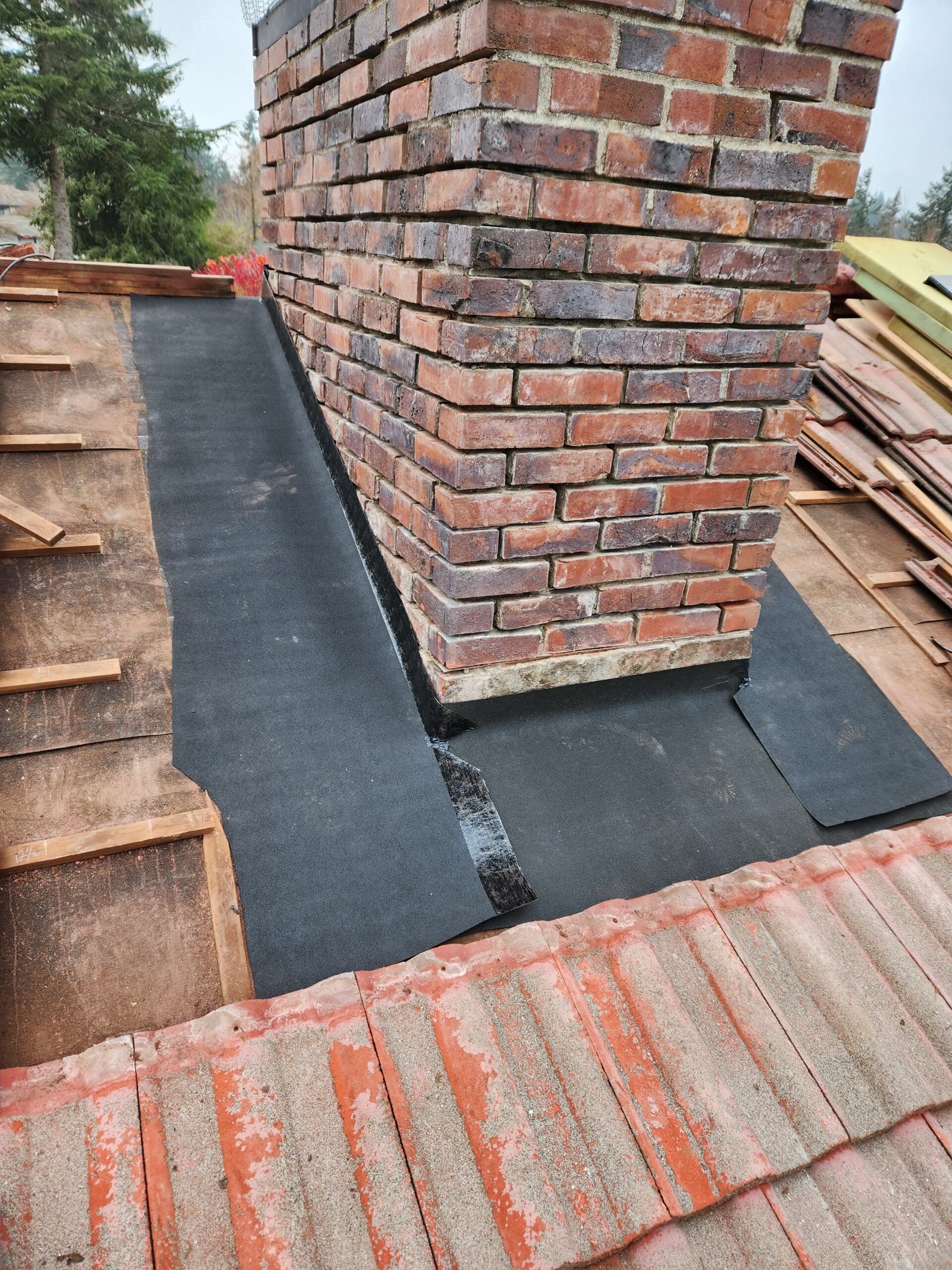
3. Gas appliances improperly connected to the flue running the chimney from the inside
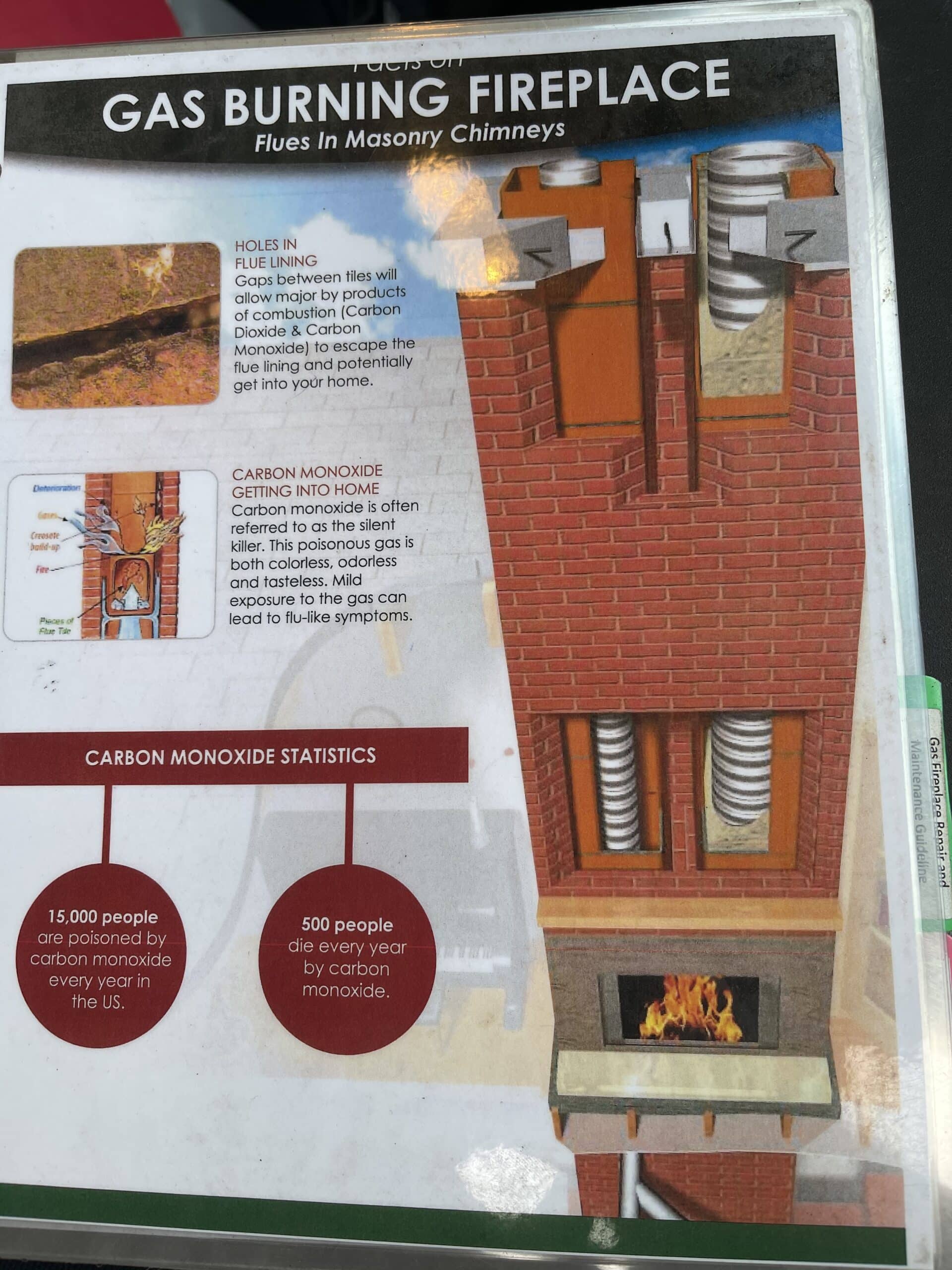
This blog will dive into each issue, the damage it can cause, how to spot it, and the reasons why. We hope this informaton helps you to more easily discern and diagnose the cause of the trouble, and helps our colleagues in the industry expand their education and awareness of these issues.
So, where does water leaking in your chimney occur?
1. The Chimney Crown, the Top of the Chimney
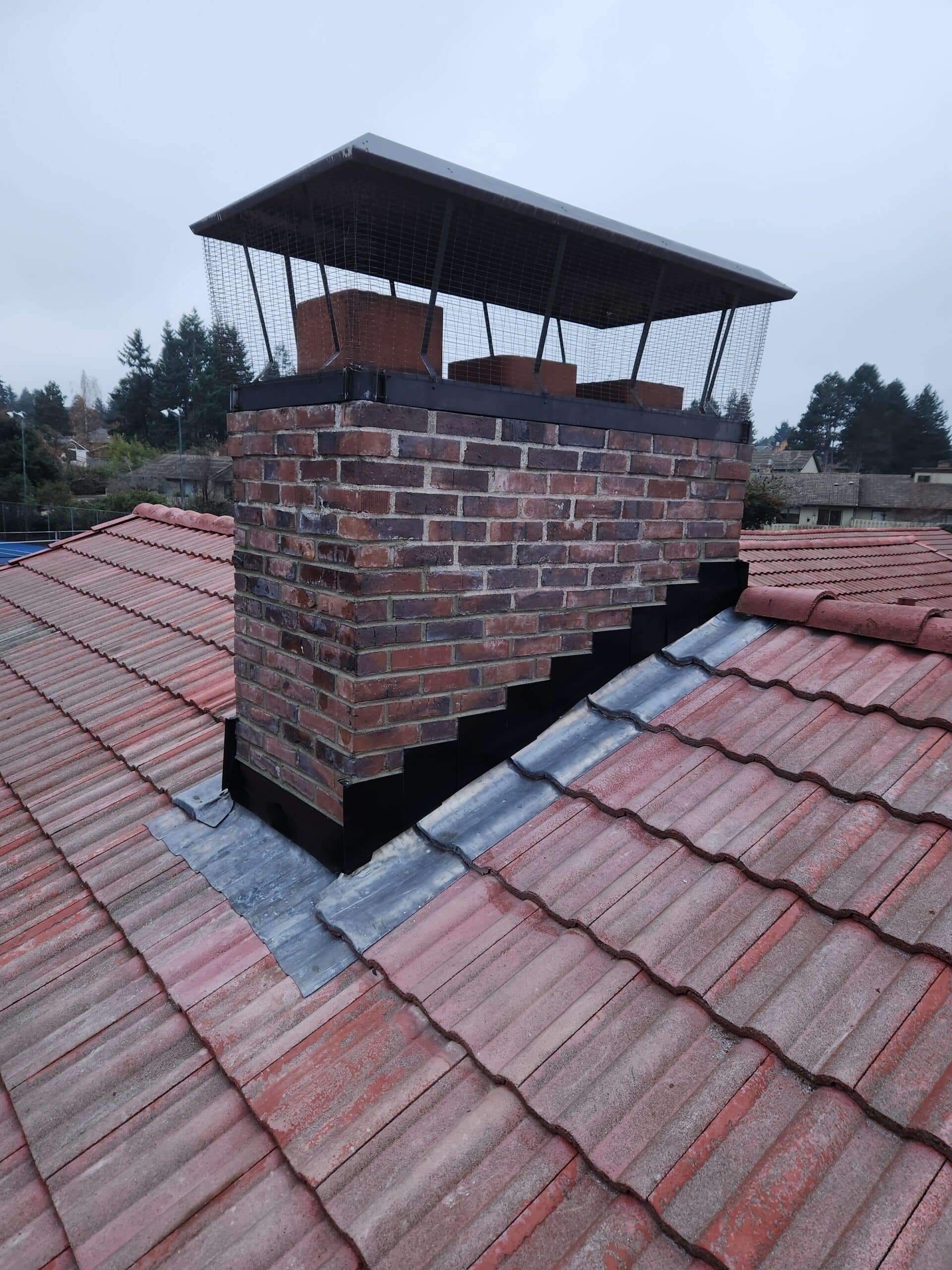
The chimney crown can be one of the most vulnerable parts of a chimney for water damage. This is the topmost portion of the chimney, which is usually like a concrete bed at the top of the brickwork. Water easily collects here, especially if the crown is not properly sloped.
Prolonged exposure to moisture at the crown causes it to get saturated to the point that it cannot take it anymore. If this happens, the underside of the crown starts to drip water onto the brick and mortar beneath it. Now, the masonry acts like a sponge taking in and storing the dripping water until it’s fully saturated. This saturation isn’t too much of a problem until temperature drops and the water freezes inside the masonry. Freezing water expands and breaks the bond between the crown and the topmost bricklayer.
If you crawl on your roof and look you can commonly find huge cracks between the crown and the bricklayer as the mortar fails. These cracks provide another entry point for water into your chimney and you’ll notice that the mortar of the bricks below the crown will start to crack faster and faster once the top bricklayer is compromised. If this is not rectified soon, the cracks continue to extend and might cause the collapse of the entire chimney.
So what should you be looking for? Here are a few signs that the chimney crown needs repair due to water damage:
- Cracked, crumbling, or missing sections of concrete or mortar at the crown
- Bricks near the peak of your chimney eroding at the edges
- Rust stains indicating damaged flashing
- Moss or vegetation growing on the crown
It may or may not be improper construction that leads to early chimney crown failure. In Portland we have such dramatic storms that we need to be very intentional about the design of our crowns and caps. Even if you were given a perfect, standard construction the moisture and nightly dropping temperatures could wreak havoc. Of course there could be issues like the crown having an inadequate slope or the mortar not being mixed right, but the most actionable step is not necessarily rebuilding the entire crown again. Call an expert if you have any concern about that and we can advise you on the safest and most sustainable long-term course of action.
Solving this problem as early as possible is important to prevent more damage and repairs to the attic, roof deck, chimney flue liner, firebox, and damper.
Solving your Chimney Crown Leaking Problem with the Right Size Chimney Cap
A lot of chimney repair pros will advocate for a chimney cap as a lasting solution. And that is the right tactic to take in many cases. Chimney caps can shield the crown and chimney’s masonry to solve the leaking problem. So when rain hits it slopes off the side of the crown and into established waterways that run around and away from the masonry.
However, not all chimney caps solve this problem. In fact, we find that many Portland chimney caps are far too small. The recommended caps often direct rainwater water to land directly onto the masonry below. For a cap to serve it’s purpose of protecting the chimney, the rain must run off the cap and onto the roof.
Most chimney repair ‘experts’ install a chimney cap that only covers the smoke hole. This is a big mistake. A chimney cap like that leaves the rest of the crown footprint exposed. This means that the water may miss your flue but will still drip and settle on the crown, fixing none of the problems.
Therefore, the solution is to install a large enough chimney cap to ensure that the entire footprint of the crown is covered. You protect the crown and the top layers brickwork from the extremely wet Portland weather.
Make sure you install the right cap for your roof. Chimney caps come in different designs: the flat-roof variation and the angled-roof caps. The flat roof cap is ideal for long-term performance and draft performance. On the other hand, the angled roof does a great job helping prevent the wind from going down the chimney.
In some instances, we hear from clients that their chimney is leaning or they can hear mortar falling and hitting their roof. Did you know that all chimneys lean to the south? This is because, during the rough seasons, Portand’s sun hits from the south end. Therefore, that side is mostly affected by the freeze and thaw effect, causing the masonry to break down faster.
Re-mortaring and repointing the south end only exacerbates the problem. Also, some chimney repair services use a mortar mixture with too much cement, which also breaks the bricks. At Portland Fireplace and Chimney Company, we know exactly how to protect your chimney for thel ong haul weather it is poorly constructed crowns or undersized caps. Contact us and avoid those year-after-year chimney repairs.
2. Where the Chimney Intersects the Roof
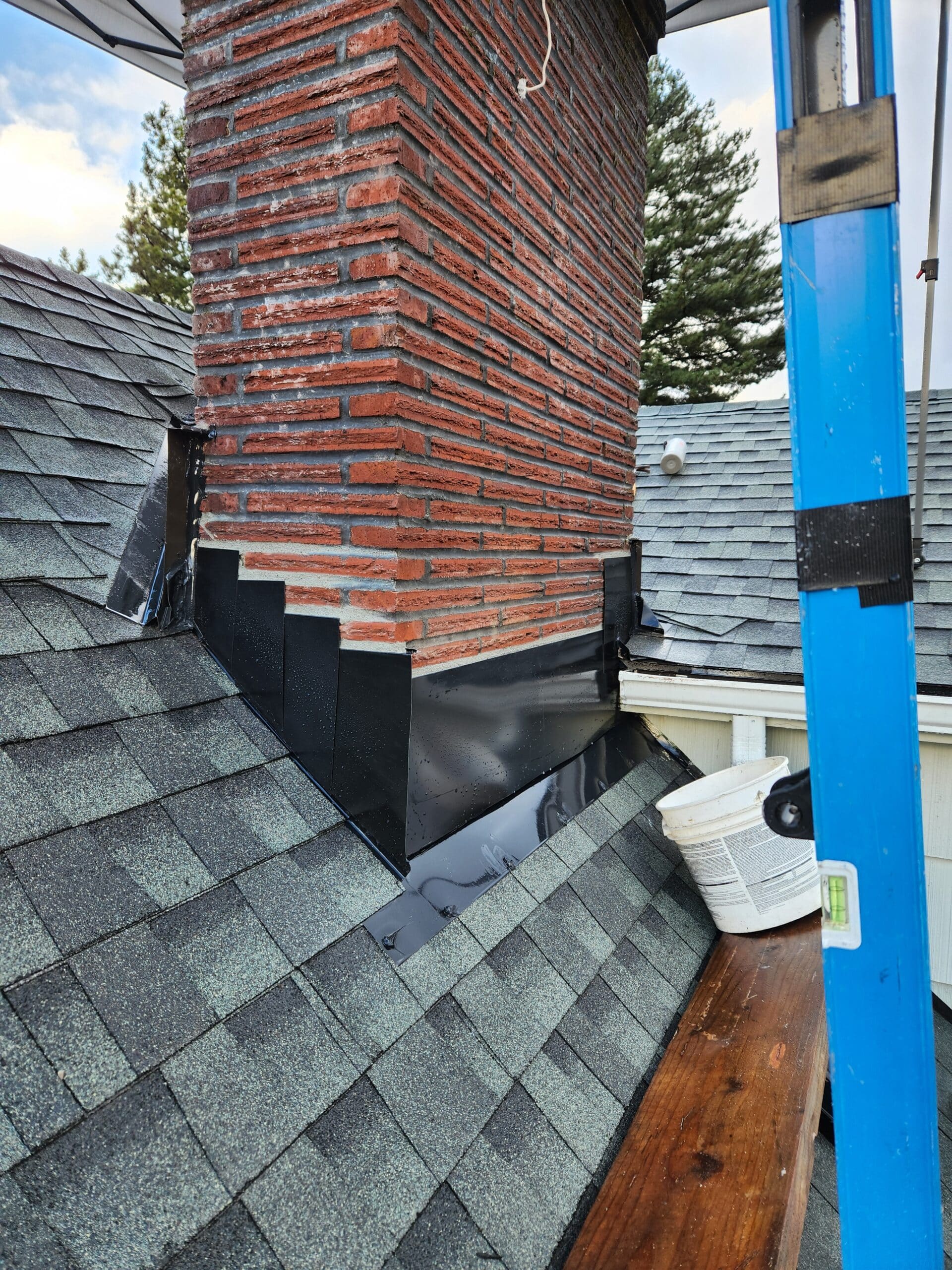
The area where the chimney penetrates through the roofline is one of the most common areas for leaks and damage. The flashing around the chimney helps seal off gaps between the rigid masonry and more flexible roofing materials. This prevents water from entering spots where shingles or roof boards meet the vertical chimney shaft. Defects in the flashing will enable water intrusion and cause harm to both the chimney and roof structures.
Signs of chimney/roof flashing failures include:
- Visible gaps between the chimney and roof boards
- Cracked or missing sections of flashing
- Rust stains on the chimney or roof
- Shingle damage around the chimney
- Mold, moisture staining, or decayed wood around chimney intersections
- Visible water damage, bubbling, or water marks on the drywall at the ceiling above the fireplace
Like the crown, flashing problems are often due to improper initial installation. The flashing may not extend high enough up the chimney or be bonded well to the masonry. But aging, shrinkage, chimney movement, and weather factors like ice damming can also distort and detach flashing over time. Metal flashing is also prone to rust and needs resealing or replacement every decade or two.
When it comes to repairing the chimney/roof intersection, not many repair teams get it right. Why? Most of the chimney repair teams aren’t trained to install roofing and thus have no experience with roofing materials. Each roofing material requires a specific kind of flashing design – not having this knowledge affects the durability of the repair.
For instance, one thing we commonly see is a weak seal where the masonry flashing abuts the masonry. The flashing needs to be tight and a barrier installed between the masonry and the flashing. This is called the “ice and water shield” and is applied over the roof system up to 4 inches minimum, on the masonry. From here, you can now install the roof shingles and flashing, and then masonry flashing known as “masonry counter flashing.”
This is among our top repair services, where the flashing comes out of the mortar joint of the chimney just above all the roof flashing. It bends down and counters over the top of the roof flashing to create the waterproof seal.
Generally, most chimney technicians struggle to get the counter flashing around the roof flashing, while maintaining good adhesion into the chimney’s mortar joint. If it is not done in the right manner, problems will undoubtedly arise as the bond will break.
Unfortunately, not many people know that chimney damage due to adhesion material breakdown is covered by homeowners insurance. This way, they fear calling the right professional due to fear of high repair costs. But the truth is, this kind of damage falls under “material break of adhesion” or “sudden occurrence” which results in a loss of property value. This makes it part of the covered home damages under many standard homeowners insurance policies. Check your own insurance plan to see if you are covered.
Your Roofer isn’t a Chimney Expert. Your Chimney Expert (likely) isn’t a Mason. Your Mason (likely) isn’t a Chimney Expert.
The delicate interplay at the junction where your chimney meets your roof demands a specialized skill set that transcends typical trade boundaries. Yet, in the home improvement industry, it’s uncommon to find a professional who possesses deep knowledge across the necessary disciplines of roofing, chimney technology, and masonry.
Therefore, when a roofer, who may lack a nuanced understanding of chimney structure, attempts repairs, or a mason without specific chimney tech expertise undertakes the work, the chance of some important consideration being forgotten incrases, potentially leaving your home vulnerable to water intrusion.
At Portland Fireplace and Chimney we are not just students of the best practices but teachers. Our founder teaches at the National Chimney Sweep Guild and was President of the regional chapter. There is nobody in Portland more qualified to do a great job on your chimney than us.
3. Your Gas Appliances are Ruining your Chimney from the Inside
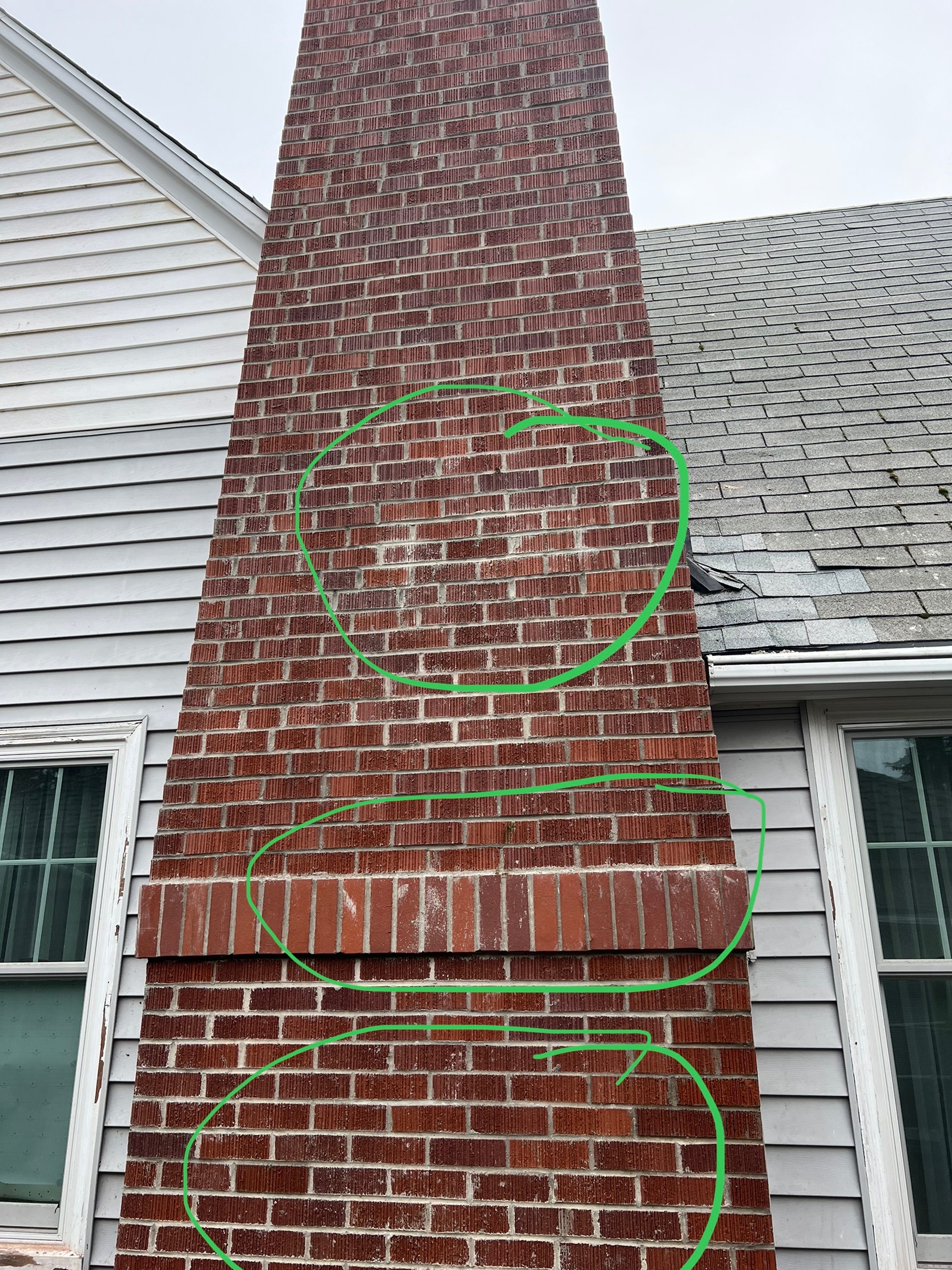
Gas water heaters, furnaces, fireplaces, and stoves vent exhaust gases like carbon monoxide. Typically these appliances are vented out through the chimney flue.
Carbon monoxide is naturally a heavy water-rich emission that comes out in the form of a vapor. The constant vapor byproduct inevitably condenses on the inner flue surfaces over time. And without proper venting design and maintenance, the moisture can saturate the brick or mortar liner and cause deterioration or leaks through the chimney structure from the inside. The condensation damage is often highest in the upper throat area of the chimney where gases cool.
Carbon monoxide is also quite corrosive and will break down the molecular bonds of the clay. This erodes the interior structure of the chimney further, especially where there is no liner present.
Signs of moisture-related chimney damage from gas appliance exhausts include:
- White mineral deposits or staining on the flue liner
- Efflorescence (white powdery deposits) on the exterior bricks
- Spalling (flaking/peeling) of liner or masonry
- Loose or missing mortar joints
- Rusting and decay of reinforcing lintels or bands within the chimney
- Downward staining patterns on the chimney exterior
Gas appliances should be vented vertically for proper draft, and sized appropriately for each chimney flue. Undersized flues or horizontal vent runs trap more moisture against masonry surfaces. Excessive condensation can be minimized by using an insulated stainless steel liner along the entire chimney length.
Lining just the upper portion may still enable saturation through the unlined masonry below. Installing a drain tray underneath the liner at the base also helps collect condensate without weakening the chimney structure.
For existing moisture damage, repairs involve:
- Removing and replacing spalled or cracked liner sections
- Repointing damaged mortar joints
- Waterproofing the interior liner
- Draining and drying out the chimney prior to any repairs
- Installing stainless steel liner rated for the appliance fuel type
- Creating weep holes to drain condensate if the liner cannot be replaced
- Checking appliance for proper venting parameters
With proper installation and maintenance, gas appliance exhaust can vent safely through a masonry chimney without compromising structural integrity. Some periodic surface cleaning, sealing, and repointing may be needed over the appliance’s lifetime. Masonry chimneys provide lasting value when appropriately paired and maintained with the venting appliances they serve.
Seeing Recurring Leaks in Portland? Give Portland Fireplace and Chimney a Call!
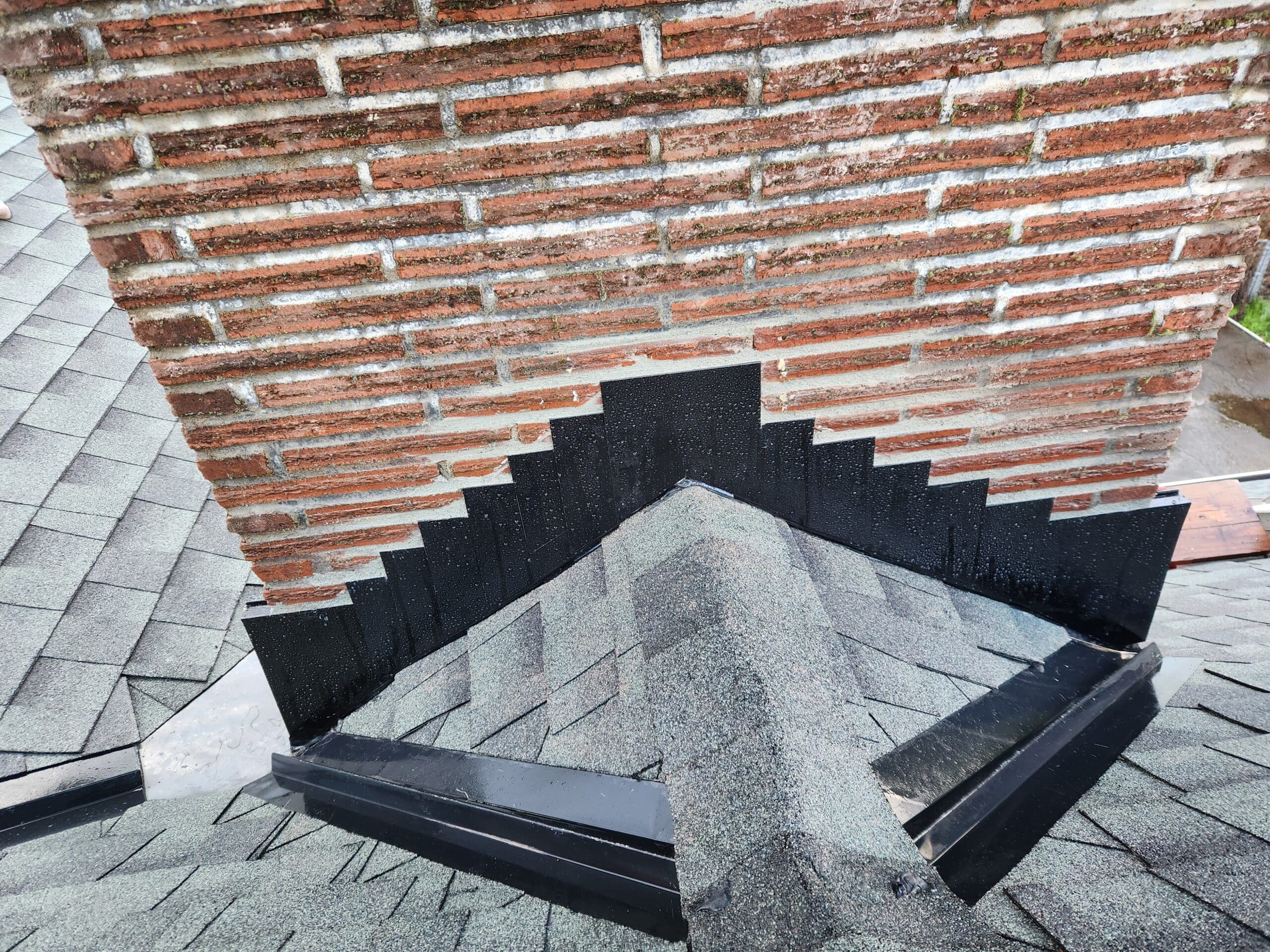
Portland Fireplace and Chimney are regional leaders when it comes to fireplace safety, chimney installation, and chimney repair. Not only do they have a strong portfolio of 5-star reviews online but they also boast being the instructors for best practices among chimney sweeps and cleaners for the Pacific Northwest region. There is no chimney repair project that is too large for our team to handle. Their comprehensive understanding of roofing, masonry, and chimney systems positions them as the premier experts to turn to for keeping your home dry and safe.
Water damage from a leaking chimney can spiral into a larger crisis, including mold, structural damage, and deteriorating indoor air quality. That’s why Portland Fireplace and Chimney emphasizes preventive measures and timely repair services.
By entrusting your concerns to their skilled professionals, you not only address the immediate problem of leaks but also safeguard your home against future rain damage. Their thorough inspections aim to catch and fix vulnerabilities before they escalate, ensuring the durability of your chimney system.
They are the best team when you need a chimney sweep, chimney inspections, chimney cap installations, masonry restoration, or chimney rebuild and full construction.
FAQ
Why is water coming down my chimney?
Water may be coming down your chimney due to a damaged or deteriorated chimney crown that is allowing rainwater to enter, because the installed cap is too small, or because of improperly installed flashing where the chimney meets the roof. Proper chimney cap installation and flashing repairs may be needed or, if the problem has been neglected for long, may require a full restoration.
Can water damage the concrete foundation?
Yes, water can damage a concrete foundation over time through the process of efflorescence, where water-soluble salts leach out and crystalize, causing surface flaking and deterioration. Prolonged moisture exposure can also lead to cracking, settling, and even structural failure of inadequately waterproofed foundations. Proper drainage and waterproofing membranes are crucial to protect concrete foundations from water damage.
How to stop chimney leaking?
To stop a leaking chimney, inspect and repair the chimney crown, ensuring it has an adequate slope and overhang to shed water. Replace any missing or cracked mortar and bricks. Check that the roof flashing around the chimney is properly sealed without any gaps. Applying a waterproof sealant to the exterior chimney can also help stop minor leaks.
How do I stop rainwater from coming down my chimney?
To prevent rainwater from coming down the chimney, have a professional inspect and repair the chimney cap or crown to ensure it is properly shaped to direct water away. Verify that the chimney flashing integrated with the roof is in good condition without any openings. A chimney cap or rain cover installed at the top can also block direct rainwater entry.
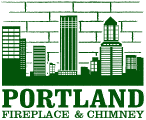
Portland Fireplace and Chimney Inc is your top notch pick for a fireplace and chimney company in the greater Portland metro area.

